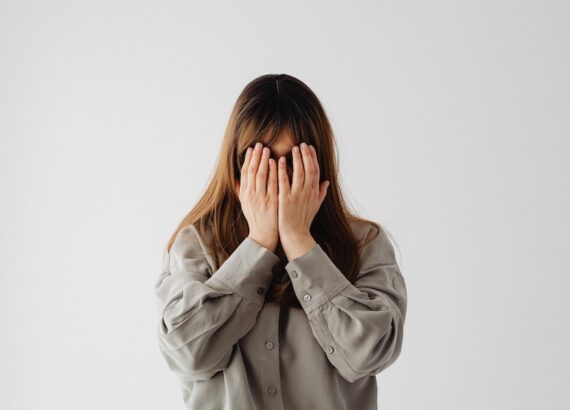Signs You’re More or Less Introverted Than You Thought

Introversion shapes how we recharge, interact, and perceive the world. It’s a spectrum, ranging from those who thrive in solitude to others who find energy in select social settings. Recognizing where you fall on this spectrum is key to understanding your own energy dynamics and social preferences.
Identifying signs of being more or less introverted can illuminate aspects of our personality we may not have fully understood. These signs influence our choice of activities, our social circle size, and our need for downtime. Awareness of these traits enables us to navigate our social and personal lives more effectively.
This insight into introversion not only helps in self-discovery but also in creating environments that align with our inner needs. Whether leaning towards deep introspection or enjoying meaningful conversations in small groups, understanding our level of introversion enhances personal growth and social interactions.
Why Introversion is Misunderstood
Introversion is frequently misunderstood, often conflated with shyness or social reluctance. However, the essence of introversion lies in how individuals recharge their energy. Unlike extroverts, who gain energy from being around others, introverts find renewal in solitude. This distinction is crucial for understanding and appreciating the depth of introversion.
The misconception that introverts are simply shy is misleading. Introverts often engage in deep thought, enjoying their own company and reflecting on their experiences. They may prefer meaningful, one-on-one conversations over large gatherings, not because they fear social interaction, but because they find greater value in depth rather than breadth.
Acknowledging the true nature of introversion can significantly improve one’s self-awareness and quality of life. It allows for a better understanding of personal needs, including the importance of setting boundaries around socializing and ensuring adequate alone time for recharging. This awareness empowers introverts to structure their lives in a way that honors their natural inclinations, enhancing their overall well-being.
Levels of Introversion and Subtypes
Introversion encompasses a wide spectrum, indicating that individuals experience it in varying degrees. Recognizing the levels of introversion and its distinct subtypes can offer a deeper insight into personal inclinations and social behaviors. This understanding underscores the idea that introversion is far from a uniform trait; rather, it manifests uniquely in each person.
The spectrum of introversion ranges from mild, where individuals might enjoy social activities but still require time alone to recharge, to profound, where solitude is not just preferred but essential for well-being. Within this spectrum, several subtypes highlight the diverse ways introversion can present itself.
Social introverts, for instance, enjoy quiet gatherings or solitude, while thinking introverts are characterized by their reflective and often introspective nature. Anxious introverts might avoid social situations due to feelings of unease or insecurity, whereas restrained introverts typically take time to warm up in social settings, preferring to observe before participating.
Identifying with one or more of these subtypes can reveal the nuances of one’s introversion, providing a clearer understanding of how to navigate social interactions and personal energy management. This granularity helps individuals tailor their environments and interactions to better suit their needs.
Subtypes of Introversion
1. Social Introverts
This subtype prefers small groups or solitude over large social gatherings. However, they don’t necessarily have social anxiety. If small, meaningful interactions are what you seek, identifying as a social introvert might resonate with you.
2. Thinking Introverts
People in this group are reflective and often lost in thought. This subtype doesn’t shy away from people but finds joy in introspection and creativity. For those who are frequently caught daydreaming or pondering life’s big questions, the thinking introvert label may be fitting.
3. Anxious Introverts
Individuals with this subtype experience social interactions differently. Their introversion is intertwined with feelings of unease or self-consciousness, often influenced by past experiences or a natural disposition towards anxiety in social settings. If social gatherings feel daunting or stressful, possibly due to worrying about how you’re perceived, you might align with the anxious introvert subtype.
4. Restrained Introverts
These people exhibit a cautious approach to life and social interactions. They prefer to observe and process before participating, often taking longer to take action or engage in conversation. This slow-to-warm-up nature means that if you’re someone who deliberates thoroughly before speaking or acting, you could be considered a restrained introvert.
Key Indicators of Introversion
1. Energy Levels in Social Settings
Introverts typically find their energy depleted by extended periods of socializing. This isn’t about disliking social events but rather how these interactions consume their energy. If you often feel the need to retreat and recover after gatherings, this is a strong indicator of introversion.
2. Preference for Deep Conversations
Unlike those who enjoy casual chit-chat, introverts are drawn to conversations with substance. They seek connections that offer depth and meaningful exchange, finding more satisfaction in discussions about ideas, feelings, and shared experiences.
3. Solitude to Recharge
One of the most definitive signs of introversion is the need for alone time to rejuvenate. Introverts relish in solitude, using this time to reflect, pursue interests, or simply rest. This time alone is not just preferred but essential for their well-being.
4. Limited Social Circle
Introverts tend to maintain a smaller circle of close friends, valuing quality over quantity in their relationships. They invest deeply in these friendships, seeking meaningful and lasting connections rather than a wide network of acquaintances.
5. Overwhelmed in Highly Stimulating Environments
Introverts often find themselves overwhelmed in settings that are overly busy or loud. Crowded places, bustling parties, or chaotic events can quickly drain their energy, prompting a need for a quieter, more controlled environment to retreat to.
Signs You Might Be Less Introverted
1. Adaptability
A key trait of those with lesser introversion is the ability to seamlessly transition from spending time alone to engaging in social activities. If you find it easy to adjust to social settings after being solitary, your introversion might be less pronounced.
2. Finding Energy in Varied Settings
Individuals who are less introverted draw energy from a range of environments, both quiet and lively. If diverse settings energize rather than drain you, this flexibility points towards a more extroverted nature.
3. Enjoying Spontaneous Interactions
The inclination towards spontaneous social encounters—without the need for prior mental preparation—marks a lesser degree of introversion. If impromptu plans or unexpected conversations uplift you, you lean towards the extroverted end of the spectrum.
4. Broad Social Networks
Possessing a wide circle of friends and acquaintances, and finding joy in large social gatherings, suggest minimal introversion. A natural ease in forming connections and thriving in group settings are indicative of extroverted tendencies.
5. Seeking Out New Experiences
A strong desire for new and varied social experiences—seeking out different people, places, and activities—reflects an extroverted aspect of personality. If exploration and novelty in social contexts excite you, you’re likely less introverted.
Becoming More Introverted With Age
As we age, changes in our lifestyle and priorities are inevitable. This evolution often leads to a shift towards more introverted behaviors. But can one truly become more introverted with age? Let’s explore this intriguing possibility.
A Shift in Social Dynamics
With age, the value we place on our time and the company we keep tends to change. Many find that their tolerance for large social gatherings diminishes. Instead, they prefer meaningful interactions or solitude. This doesn’t necessarily mean you’re becoming more introverted. Rather, you’re becoming selective in how you spend your energy.
Changing Priorities
As responsibilities grow, so does the appreciation for quiet and rest. Older adults may seek peace over excitement, valuing quality time alone or with close friends. This shift mirrors introverted tendencies, emphasizing deeper connections and self-reflection.
Increased Self-Awareness
With age comes wisdom and a better understanding of oneself. Recognizing the need for solitude and recharging alone is a sign of self-awareness, often misconstrued as increased introversion. It’s more about knowing what works best for you.
Misconception and Reality
The common misconception equating introversion with a dislike for people overlooks the complexity of introverted energy dynamics. In reality, introversion involves how individuals manage their energy and establish personal comfort zones.
Introverts often enjoy socializing, but they do so within limits that prevent them from feeling drained. Their preference for smaller groups or meaningful conversations doesn’t stem from antisocial tendencies but from a need to conserve energy and engage in more fulfilling interactions.
Can You Be Too Introverted?
The question of whether one can be “too introverted” touches on the importance of balance and mental well-being. Extreme introversion—while not inherently negative—can pose challenges if it significantly restricts social interaction and daily functioning.
Defining Extreme Introversion
Extreme introversion is characterized by an overwhelming preference for solitude, impacting one’s ability to engage in regular social activities or maintain functional relationships. This level of introversion can become problematic when it leads to isolation or hinders personal and professional development.
The Impact of Extreme Introversion
The consequences of being highly introverted can include feelings of loneliness and social isolation, highlighting the distinction between a healthy enjoyment of solitude and detrimental disconnection. Maintaining social connections is crucial for emotional health; thus, recognizing when introversion becomes a barrier to these connections is essential.
Finding a Balance
Achieving a balance between embracing introversion and avoiding its extreme impacts involves seeking out social interactions that feel rewarding and manageable. It’s not about altering one’s introverted nature but finding ways to enrich life through selective social activities. Engaging in hobbies or groups that reflect personal interests can serve as a comfortable avenue for building connections and enhancing social well-being.
Finding Your Balance
Realizing if you’re more or less introverted than you thought involves finding a comfortable middle ground in your social life. It’s not about changing your introverted nature but understanding it better and making choices that enrich your life.
Picking social activities that feel good to you, like joining clubs or groups that share your interests, can be a great way to connect with others at your own pace. This approach helps you manage your energy levels while still enjoying meaningful interactions.
Understanding whether you lean more towards introversion or are less introverted than assumed is key to navigating your social preferences successfully. By selecting the right kind of social settings and activities, you can embrace your introversion while also exploring the joy of connecting with others.
Sarah Lowe
Latest posts by Sarah Lowe (see all)
- What It Means To Be Privacy-Conscious - April 25, 2024
- How To Thrive as an Introvert in an Extroverted Family - April 18, 2024
- Learning To Say No as an Introvert - April 18, 2024






